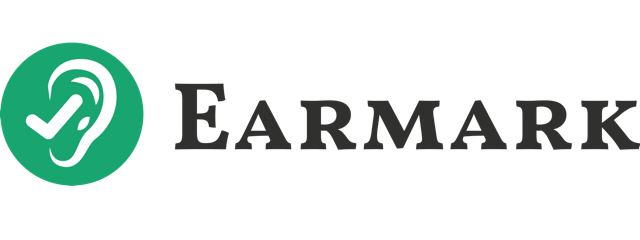Every accounting professional has the same 24 hours each day, yet some feel perpetually behind while others run efficient, profitable practices—and still have time to enjoy life. According to Mark Ferris of Panalitix, the difference often lies in how purposefully you structure your organization, communicate with teams and clients, and focus on high-value work.
In a recent webinar, Mark shares that moving beyond old-school time management toward “strategic productivity” involves three steps: (1) establishing effective organizational systems, (2) improving communication, and (3) refining individual mindset.
1. Establishing Effective Organizational Systems
Mark explains that “business is a team sport,” and even sole practitioners must consider how clients and contractors interact with their workflows. He emphasizes the importance of delegation and role clarity as the bedrock of effective time management. You can determine which tasks genuinely demand your expertise by identifying your workload in categories—administration, operations, production (basic vs. complex), management, client relationships, business development, and leadership.
He notes that using an organizational chart and job descriptions “prevents you from doing tasks that don’t require your specialized knowledge,” freeing up time to deliver advisory work or focus on firm growth. Mark also points out that routine procedures (such as client onboarding, payroll, and tax preparation) are best systematized via checklists. These checklists “ensure consistency and make delegation easier,” which allows key leaders to dedicate more attention to top-level strategy and client relationships.
According to Mark, strong key performance indicators (KPIs) bring structure and accountability to a practice. “Whether you track turnaround times, gross margin, client satisfaction, or productivity hours,” he says, “everyone should know how success is measured.”
He further highlights the importance of a consistent meeting cadence. In Mark’s view, “a daily huddle of 10–15 minutes can drastically reduce confusion,” because participants share top priorities, key metrics, and obstacles. He also recommends scheduling weekly or monthly meetings around production planning, marketing, or strategy and documenting actions so that discussions move the firm forward.
2. Improving Communication
“Email isn’t going away,” Mark emphasizes, “so we need smarter systems so it doesn’t run our lives.” One of his core recommendations is batching your inbox—setting specific times each day to tackle emails. He adds that if you open an email, “respond, delegate, or archive it immediately” rather than letting it linger.
To further prevent inbox overload, Mark recommends sharing documents in a central repository instead of sending attachments back and forth. He also highlights the value of a speed culture and response policies, noting that “slow response often undermines a client’s trust.” Setting a standard turnaround time (such as 24 hours for routine inquiries) and prioritizing A-list clients keeps projects on track and clients happy.
Mark advocates designating meeting-free zones each week to make headway on complex projects. “A day without meetings gives you uninterrupted time to focus,” he explains, “and it’s amazing how much more you can accomplish when you’re not constantly switching tasks.”
3. Refining Individual Mindset
Mark challenges practitioners to avoid the trap of filling newly freed-up time with more tasks. “What’s the point of being more productive,” he asks, “if we just keep piling on work until we burn out?” Instead, he advises using calendar blocking and setting deadlines to combat Parkinson’s Law—“work expands to fill the time available.” When you define strict time frames for tasks, you’re less likely to waste energy.
He highlights the value of chronotypes, referencing Daniel Pink’s research, and encourages CPAs to schedule complex tasks when their energy naturally peaks. This goes hand in hand with deep work concepts (from Cal Newport), where one to three hours of distraction-free concentration “dramatically boost both output and quality.”
Pointing to the idea of slow productivity, Mark urges professionals not to equate constant rushing with true progress. “By focusing on quality over quantity,” he notes, “you actually achieve more while protecting yourself from burnout.” He shares several stress-busting tips—like walking breaks, breathing exercises, or simply looking away from screens periodically.
The Pareto Principle (80/20 rule) also applies. Mark observes that “20% of your clients may be consuming 80% of your time,” despite not contributing meaningful revenue. He recommends offloading or restructuring those relationships so you can invest energy in A-list clients who value your services and are open to additional services or advisory work.
Bringing It All Together
According to Mark, practicing “strategic productivity” means joining organizational structure, communication mastery, and a focused personal mindset. Whether your goal is to take on higher-level advisory, grow your firm, or simply have more control over your schedule, implementing these strategies can help you work smarter instead of harder.
He suggests picking one or two techniques—such as instituting a daily huddle or revamping your inbox routine—and taking immediate action. Mark stresses the importance of documenting and sharing any new policies, checklists, or workflows so that “everyone is on the same page, and no one reverts to old habits.”
Mark also recommends exploring further resources, including short courses, events, and learning materials offered by Panalitix, which provide deeper dives into email management, leadership development, and operational process improvements.
To learn more about Mark’s approach and see these strategies in action, watch the full webinar, where he provides step-by-step advice for applying each concept. Get ready to discover how small, purposeful changes can free your time, delight your clients, and bring greater satisfaction to your accounting practice.
